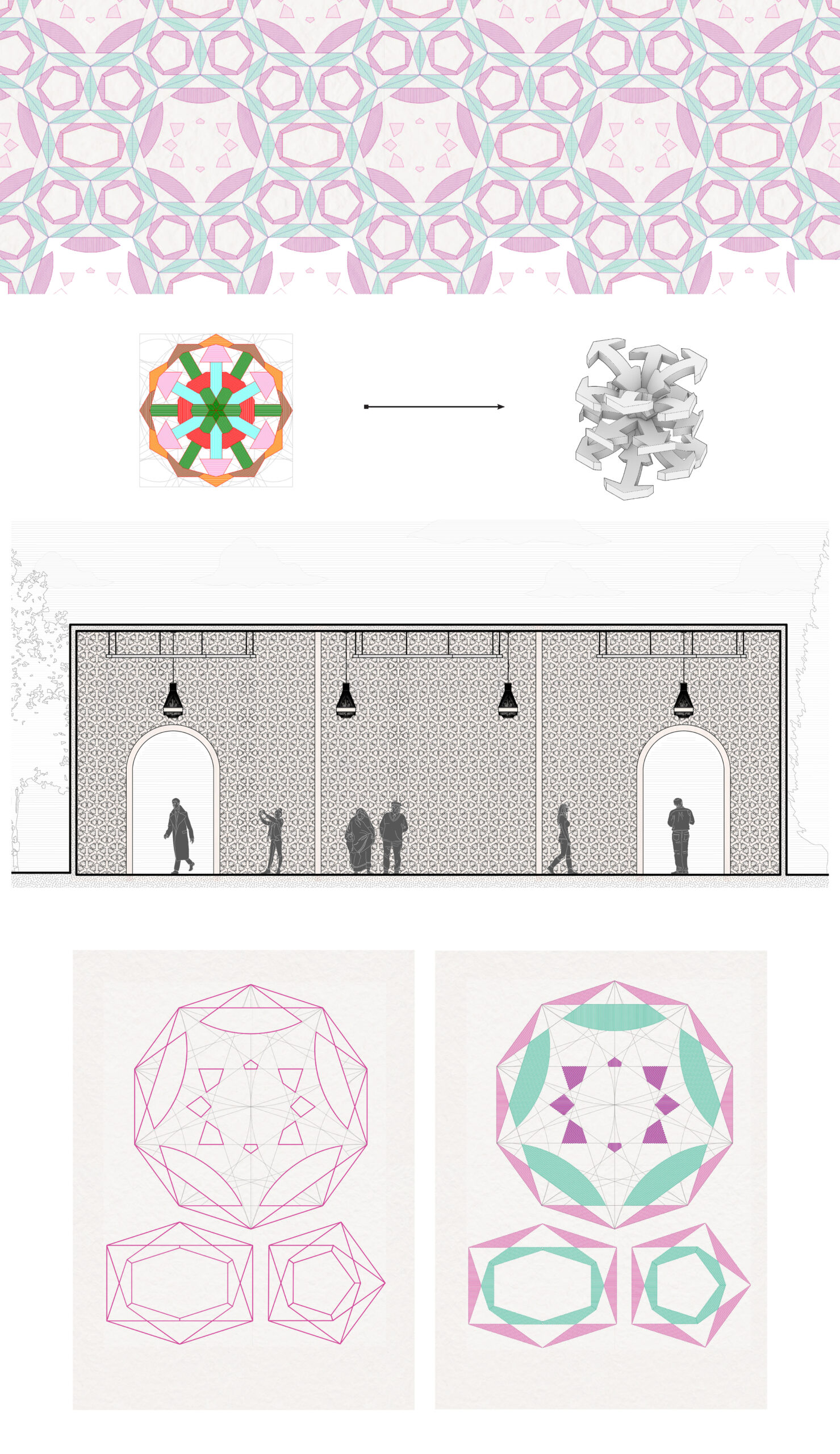Patterning is a fundamental architectural and artisanal practice. Although geometric ornamentation was present in pre-Islamic societies such as the Byzantine and Sasanian empires, this decorative style reached its pinnacle through Islamic art. Inspired by core foundations of ancient geometric precedents, Muslim artists elaborated on their characteristics to create a new paradigm for geometric art, revolving around unity, logic, and order. Rooted in geometry and form, my interpretation of Islamic geometric patterns is made using the overlaying of significant shapes in Islamic patterning (square, hexagon, khatim, etc.) along with the historically used “circle method” to create a series of construction lines from which forms are extracted and highlighted. The traditional application of such patterns remained two-dimensional, in the form of tiles and ornamentation. However, extracting three-dimensionality from these tiles has rarely been touched upon outside of dome structures, either the composition of the internal volume of domes called Muqarnas or façade patterns on the dome itself. Thus, this thesis aims to find the potential cross-dimensional capabilities of these patterns and their compositional techniques in hopes of analyzing three-dimensional applications.



